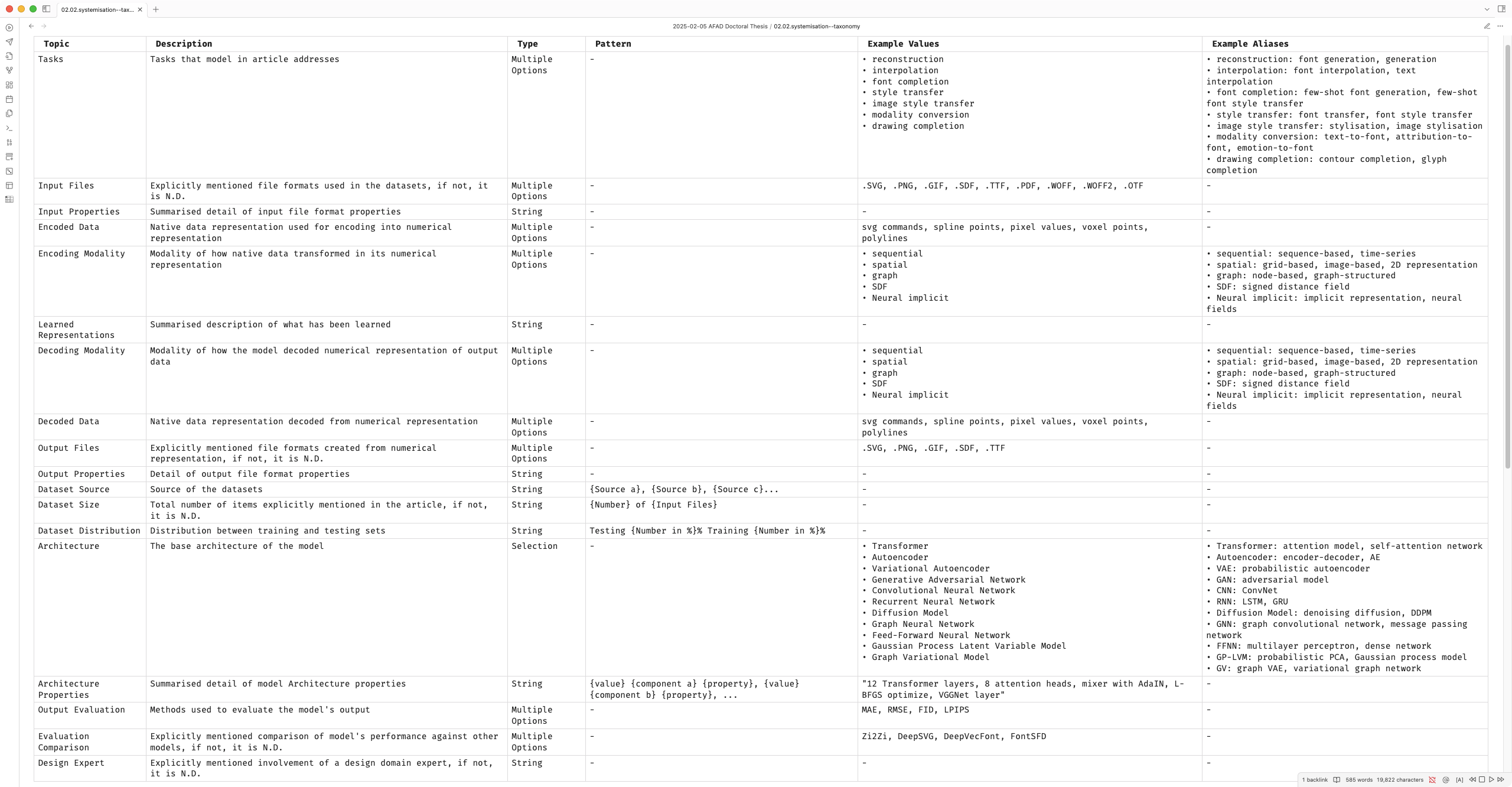2.2. Systematisation: The Taxonomy of AI Font Generation Projects
The exploration component presents challenges analogous to navigating a sprawling, disordered archive. Raw codes and memos necessitate extensive organisation, while an overwhelming number of undefined terminologies complicate comprehension. Frustration arises from inconsistent term usage across the literature, underscoring the imperative for a systematic structuralisation of a taxonomy and definition of terms. Such a structured methodology is essential to streamline information and facilitate coherent communication within the research framework.
The establishment of standardised definitions draws upon two complementary literary sources. The seminal textbook Deep Learning (Goodfellow, Ian, Bengio, Yoshua, and Courville, Aaron 2016) provides comprehensive foundational knowledge despite its limitations in vector graphics coverage and pre-2016 scope. Survey papers (Achraf Oussidi and Azeddine Elhassouny 2018; Lin et al. 2021; Sarker 2021; Xiaojie Guo and Liang Zhao 2022; Yang 2024; Zou et al. 2024) complement this foundation by addressing recent technological developments within the specific context of font generation and vector graphics processing.
The taxonomy is developed around understanding 1.) The pipeline of
converting font files (e.g. .otf, .ttf) into
generative models, encompassing input (standard font files),
transformation (data processing and formatting), and output (trained
models) 2.) Deployment of emerged models and their application in type
design workflow incorporation.
The analysis yielded 18 distinct topics with associated definitions and terminology. Mapping was implemented to consolidate terminology across the literature, much like an art curator creating a concordance between different names for the same painting across multiple museum catalogues. Example aliases were documented to connect variant terms to their standardised definitions.
The mapping focused particularly on three parent classifications that exhibited the most terminological variation:
- Task
- Encoding/Decoding Modality
- Architecture.

